The Fracturing of the D&D Fanbase and Online Arguments
Remember when D&D Combat was "Simpler" and "Easier" to Understand than 5e? Me Either. Part 1: Some Initial Thoughts
Some Background
Next year is the 50th anniversary of the publication of Dungeons & Dragons role playing game and Hasbro/Wizards of the Coast are currently playtesting an update to the D&D game that will be released in celebration of that event. The marketing team at Hasbro assures us that this is not a “new” edition and that it will be fully backward compatible, even as the playtest classes include some very significant shifts in abilities and modifications of rules. To be fair, the changes aren’t as radical as the shift from 2nd Edition to 3rd Edition, or from 3rd to 4th, but they are as significant as the changes from AD&D to 2nd Edition and that’s saying something.
Hasbro’s marketing and sales teams are making a lot of the same mistakes prior marketing and sales teams have made with the D&D brand. Like with the 4th edition marketing, Hasbro has been adversarial to their fanbase and the OGL that has created so much. You can read a bit about that in my February 2023 post regarding how worry about D&D being “under monetized” underpinned some poor decisions.
D&D Wasn't "Under Monetized," but Belief that it was Probably Hurt the Brand
In addition to the expensive marketing snafu regarding the OGL, Hasbro has seen a significant decline in sales in their non-core books as 5th edition has gone through its publication life cycle. I could do what a lot of people in the media do and steal other people’s hard work and pass it off as my own, but instead I’ll refer you to Professor Dungeon Master’s video on the topic. In a video on August 9, 2023, Professor Dungeon Master shared sales figures of D&D rule books and products. These sales were for the book market and excluded direct hobby sales, which are also sure to be significant, but they tell a very interesting story.
That story, which Professor Dungeon Master surprisingly doesn’t articulate directly in his video, is that brand dilution has begun to affect D&D adventure sales in the same way as it has in past generations of the game. In his book Slaying the Dragon, journalist Ben Riggs covers the history of the final collapse of TSR from when Lorraine Williams saved it (yes she did) to when her business decisions destroyed it. There are a lot of takeaways from the book, but the two I would like to focus on are that sales of core books have always been strong for D&D as long as the company has been viable and that as the publisher released more and more settings it diluted the overall sales landscape via a process we MBAs call “cannibalization.”
As you can see from the above charts, core D&D sales were consistently above 50,000 units a year, even as editions declined. The drop off at the end of the 90s had a lot to do with the fanbase knowing that TSR was going out of business, and that TSR couldn’t actually print anything new, and not just declining sales due to fatigue with the new edition. It should be noted that you do see a legitimate edition life cycle there, though like most industry trends you tend to have a short tail at the end that would continue. New editions are a way to kickstart the brand and create a new long tail, though 2nd edition’s surge wasn’t as high as 1st edition’s it is still substantial.
Looking at the setting data, you can see that settings are really hit or miss. Greyhawk and the Forgotten Realms sold a ton, but others did not sell as much. Sure, many sold well enough, but given high development and production costs some of these probably cost the company money (I’m looking at my beloved Karameikos and weeping here). Modules sold even worse than settings. To take another example from Ben Riggs’ data, in 1994 the Dark Sun Boxed Set sold 13,759 copies (from that total of over 120,000) while the Road to Urik adventure only sold 544 copies. This is in part because settings are useful to both players and DMs, while adventures are primarily only of use to DMs and collectors and that’s a smaller market.
What does this have to do with Professor Dungeon Masters’ video? Did you notice when he said how D&D was selling both better and worse than you might think? Did you notice what he said was selling worse? It was the adventures and the more niche the adventure the worse the sales. It is no accident that the adventures not tied to a legacy IP with a built in fandom have the worst sales. Looks like Hasbro is repeating many of the mistakes of the past and I would guess that the reason for the new edition is that they’ve hit a long tail. It is surely a long tail with a higher sales figure than older ones, but I’d bet they hit one and they want that new edition bump without the 2nd/4th edition reduction. Sadly, it looks like their marketing has handled things poorly and burned some of the goodwill that the brand has acquired over the years.
The release, and success, of the Baldur’s Gate video game demonstrates that the brand isn’t going to die, but it also highlights the difference between the table top and computer versions of the game. Given that the company is run by computer people, I don’t know what this means for the table top game other than it will likely be treated like a loss leader and that the new edition will cause a new fracture in the fan base.
Fractures in the Fan Base and “Good Ol’ Days” Arguments and Loss Aversion
Even before the release of AD&D, there were fractures in the D&D fanbase with regards to styles of play. With the release of D&D Basic, in part to isolate Dave Arneson’s D&D earnings, those fractures increased. Yes, there were players who played both D&D and AD&D. The people who taught me to play made no distinction between the two, but many considered D&D to be for “the younger” crowd and game designer Phil Masters summed up what many older gamers thought of these young Fighting Fantasy gamebook and D&D playing youngsters in White Dwarf #73.
What’s interesting about Phil’s remarks, is that you can replace “infant gamers” with whatever the current adjective for “newer” gamer is and it’s an argument you still see every day on social media. To be fair to Phil, who has designed a number of my favorite products BTW and whom I think is probably a really nice guy this letter not withstanding, there are valid reasons for this kind of resistance. People are tremendously loss averse and loss aversion extends to cultural heritage. Given that gaming communities and one’s sense of a gaming community is a form of culture with a heritage, it stands to reason that gamers would be resistance to losing a thing of value even if it is being “replaced” by something of equal value. It’s the fear of losing that which made that gaming space special.
What that special thing is varies from person to person, but for some it is the way that combat plays out in a role playing setting and in D&D in particular.
(Yes, I believe this is the longest segue to the main point ever written by a man not named Herbert Melville.)
The Main Point.
The new isn’t always bad and the old wasn’t always better, but sometimes the new is bad and the old was better but not in the way remembered. (This can go on forever).
Back in September of 2019, Cam Banks wrote a brief response to people who argued that they missed the "good ol' days of gaming" when combat was easier to learn and play than the 5th Edition of Dungeons & Dragons. Cam's response was direct and to the point.
My response was a little snarkier than Cam's and included a reference to the Weapons & Armor chart in the 1st Edition AD&D Players Handbook (sic).
The point that each of us was making was that it is a myth that older versions of D&D were "rules light" that were easier to learn for newer gamers, or were somehow superior to more recent versions of the game because of their ease of play. Dungeons & Dragons has always been a complex game with arcane rules for combat that could be intimidating to new gamers and veteran gamers alike.
I've been a fan of every edition of Dungeons & Dragons that I've had the pleasure of playing. Yes, I even LOVE 4th Edition D&D. I think it has a nice balance of tension at the heart D&D system, whether to focus on role playing or on tactical combat. Each edition of the game has tried to fall somewhere in the middle, allowing for players who favor each kind of play to have a good experience, but I think that 4th Edition hit an almost perfect balance between the two. I would also argue, and this might shock some people, that it was less a tactical combat game than most of the editions that preceded it. This is especially true of 3rd Edition, which is the most granular simulation of tactical skirmish combat ever designed.
There are so many sub-systems in 3rd Edition that you can essentially solo-play "SIMTavern" by using the skill rolls and random encounters without the need of a DM. I'm not writing that as a critical statement. It's a remarkable achievement that appeals to a sizable group of gamers that includes me as a card carrying member. I've spent many an hour using GURPS and Hero System to do exactly this type of gaming, and prior to 3rd Edition I never thought D&D was a good "SIMCity" rpg.
But this post isn't about the underlying skill system and how well it can be used to simulate day to day activities in a Bayesian's Daydream of game play. This post is the first in a series of posts about D&D combat and how complex it has always been. This series will cover Original Dungeons & Dragons, using both the Chainmail and Alternative Combat System variants, Basic D&D (Holmes, Molday/Cook, and Mentzer), AD&D 1st Edition, and AD&D 2nd Edition.
IF you think the segue above was ridiculous, wait until I let you know that today's post is just an overview regarding the motivation for the series of posts, which is a desire to argue that there never has been a truly simple era of D&D combat. As Cam stated above, each edition has its problems and gamers have adapted to those problems. Smart people have been confused by D&D from the beginning. If you read the first few issues of the famous Alarums and Excursions fanzine (you can order them from the source here), you'll see that some early gamers misinterpreted the spell system and Lee Gold initially thought that saving throws were based on rolling 2d10 and adding them together.
Lee Gold Discussing Saving Throw Probabilities Based on Assumption of 2d10 Added Together
While modern gamers may wonder how a game designer like Lee Gold could have this assumption, one need only look at the older twenty sided dice to see that they were numbered 0-9 twice. Thus it seems natural to infer that the alternative combat system and saving throw system were based on a roll of two of these dice added together. Later editions discussed this more expressly and included recommendations for how to convert these dice to "true" twenty-sided dice.
Modern gamers have the advantage of beginning play upon a foundation of norms established over decades. Early gamers didn't. This made early D&D even more confusing than today's game. Though I will argue in the next post that using the Chainmail system for D&D combat is even more confusing than today's game, even for a gamer with strong foundations in both role playing and modern miniatures games. Had I not played Warhammer I would have been in the dark on how to play Chainmail, even having read the rules several times. Though after examining those rules, rules it seems no one actually used for D&D, I think they would work quite well and eagerly want to try my hand at them.
I’ve even bandied about the idea of trying them out on my own, and you can read those thoughts in the very first post I wrote for this Substack (though I don’t think it was the first published).
Rethinking Dungeons & Dragons: An Alternate "Original D&D" Combat System
In the coming posts, alternating with some regular posts and film reviews, I’ll be discussing some of the complexities of various editions of D&D in the hopes that you will see that every version of the game has something to offer. After that’s done, I’ll probably do a similar exploration of other systems because there is a lot more out there than D&D that is worth your time.




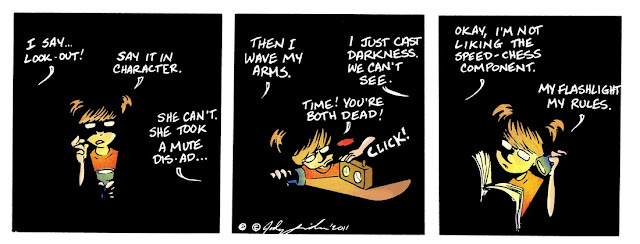

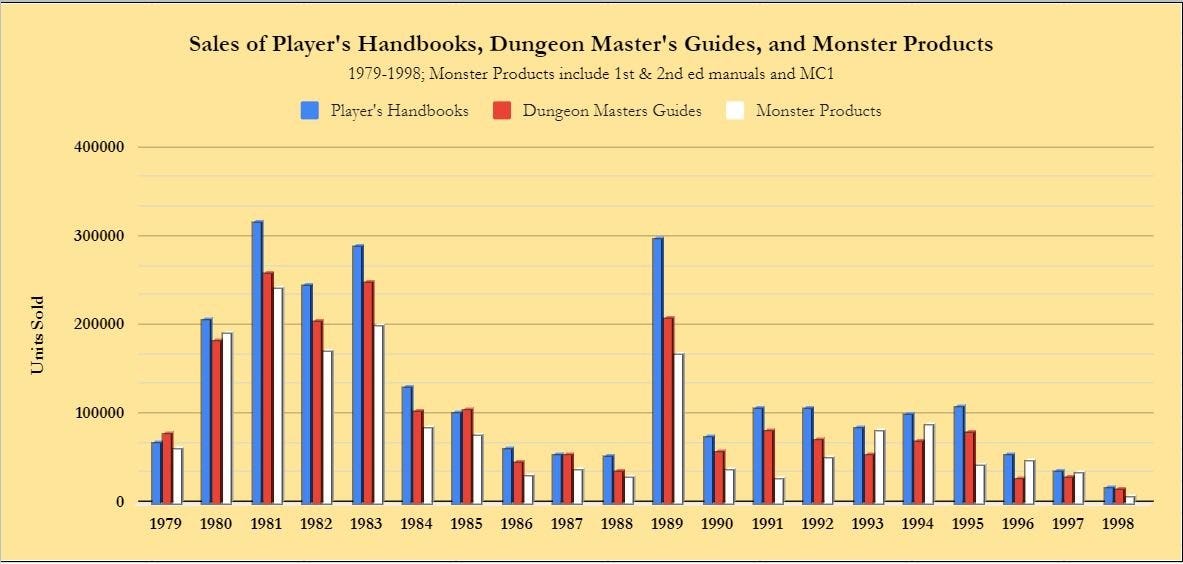
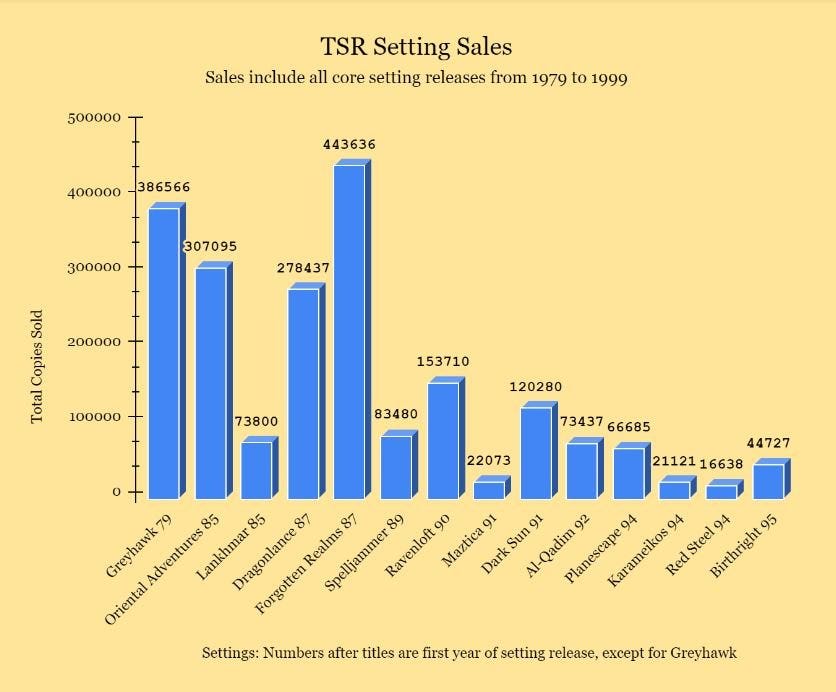

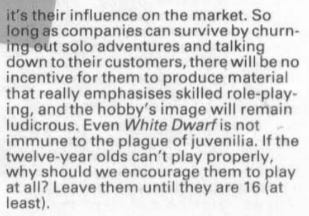
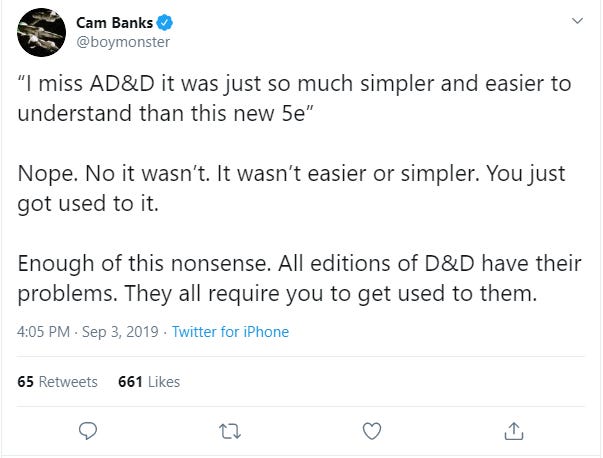
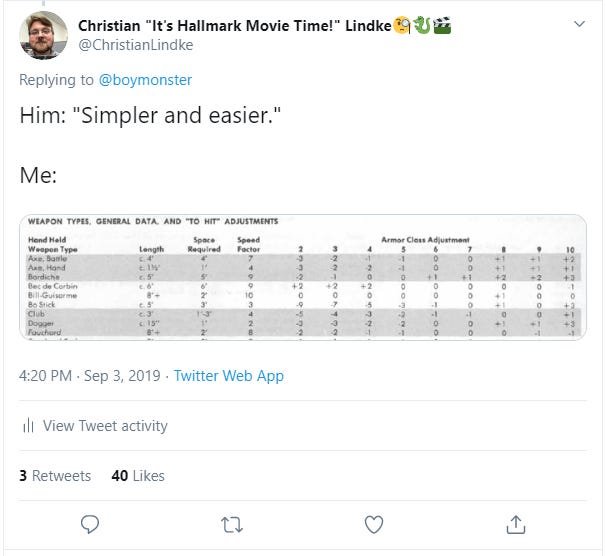

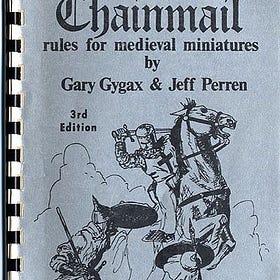
The problem with PDM's video is those figures refer only to big box store sales, so they don't include Amazon, which is where the overwhelmingly majority of people get their books. It also doesn't take into account folks for whom their D&D material is wholly digital through D&D Beyond.